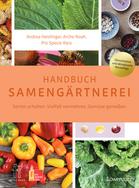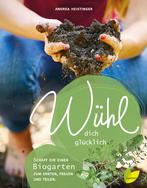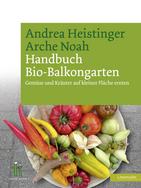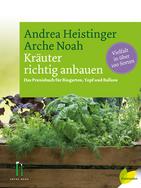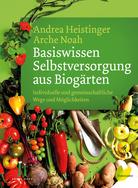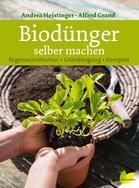E-Mail office(at)reinsaat.at
We are available by phone:
Monday - Thursday, 8:00 am - 5:00 pm | Friday, 8:00 am - 4:00 pm.
GiO-Blog | Andrea Heistinger
We are delighted to present blog contributions from our guest author Andrea Heistinger here at regular intervals. She is a highly valued expert in organic gardening and organisational development, and will be sharing her extensive knowledge and experience on the topic of ecological horticulture with you. We hope you enjoy reading!

Metaphors of Gardening
Meaningful images for vibrant organisations and enterprises.
Just as important as the question of what we make of our garden is the question of what our garden makes of us. Because we can learn so much from organic gardening that applies to many other areas of life. The garden and the act of organic gardening create powerful metaphors for strengthening and regenerative processes – for individuals, teams, entire companies and organisations.
The garden as a space of protection
A garden is both a place of shelter and nourishment. What allows plants to grow and thrive – and from the gardener’s perspective, to yield and harvest – is protection from wind and wild animals through fencing, as well as the creation of a deep, humus-rich soil that roots can penetrate easily.
⇒ Translated to organisations and leadership, this means:
Leadership means creating an environment that enables personal growth for individuals and fruitful performance for the organisation through its employees.
The garden as a space for collective development
The most important growth area for plants is initially underground – a space that remains invisible to us humans. Something both wonderful and practical happens here: in living soil, plants are able to actively mobilise a wide range of nutrients. Contrary to the traditional view of plants as passive beings to be fed with artificial fertilisers – a view that emerged in the 19th century with the rise of fertiliser research – modern bio-communication sees plants as active organisms capable of self-regulation when conditions are right. Through the release of root exudates, plants can work in close cooperation with fungi and bacteria to unlock nutrients such as phosphorus and potassium from the soil – precisely when they need them. I call this: “A good gardener is someone who understands roots.”
⇒ Translated to teams, leadership and team development:
People need an environment (a garden) that enables genuine collaboration – in the sense of truly growing together as a team. It should encourage personal responsibility and allow for the nurturing and development of relationships. And: The products or services of a company are the visible fruits and blossoms growing above ground. Beneath the surface – often unseen – it is deep-rooted teamwork that makes these results truly fruitful for the organisation.
Tempos and rhythms of growth
Plants grow both quickly and slowly. The developmental processes of cultivated plants involve – under the care of the gardener – acceleration, deceleration and pausing in rhythm and harmony. Germination, sprouting, blooming and ripening: these are the four phases in a plant’s life. What are the conditions each phase needs in order to begin and fully unfold?
Germination
For a seed to germinate, three main factors are needed: warmth, moisture and – for most cultivated plants – darkness. Then, the root emerges first – downwards toward the centre of the earth – followed by the shoot reaching for the light. Until the seedling can nourish itself, the nutrients stored in the seed provide all that is needed for germination.
→ Questions for people and organisations:
What are the conditions in your organisation that allow innovation and new ideas to germinate?
Does the analogy of the seed – that innovation begins in the dark, unnoticed by most – also apply to your organisation?
In generational transitions: what experience, knowledge or resources does the next generation need to keep growing?
Sprouting
Now begins the phase of vigorous growth – in cultivated plants, the formation of edible plant matter we call vegetables. To succeed, the plant needs:
Light – to convert into biomass
Warmth – to speed up growth
Water – absorbed through fine roots
And: enough growing space for the plant to expand.
→ Questions for people and organisations:
What conditions do you need at your workplace to better unfold your potential?
As a leader: how can you encourage your team’s growth? Where do you need growing space yourself, and where do your employees need a "trellis system" – in the form of mentoring, coaching or hands-on guidance, and by whom?
Blooming
A plant begins to bloom. In our gardens, this is the beautiful and visible purpose of cultivation. From the plant’s perspective, it’s about reproduction. Flowers attract insects for pollination. We call it symbiosis. Some plants bloom depending on daylight length. But in any case, blooming requires different nutrients than vegetative growth.
→ Questions for people and organisations:
When in your career have you truly felt in full bloom?
What does a “blooming organisation” look like to you? Which companies come to mind?
Seed formation
Hundreds of seeds ripen on a mother plant – from one, many. Maturation requires warmth and dryness – and a gardener to harvest them in time. Or: allow for self-seeding, like in Blackbox Gardening, where plants find their own place next year.
→ Questions for organisations:
How do we ensure that insights from completed projects are passed on and made visible within our organisation’s evolution?
Do we have processes or rituals for closure, reflection and celebration when something is completed?
In generational transitions: what knowledge, experience and resources does the outgoing generation want to pass on?
A beginning at the end
Has this article planted a seed in you? Sparked an idea for practical implementation? Or are you looking for someone to accompany you in your team-building processes?
I work with a network of colleagues from Austria and Germany who are happy to support you in regenerating your team.
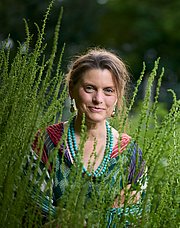
Our guest author
Andrea Heistinger
Email: autorin@andrea-heistinger.at
Website: www.andrea-heistinger.at
Order free of charge, brows online or download PDF.

